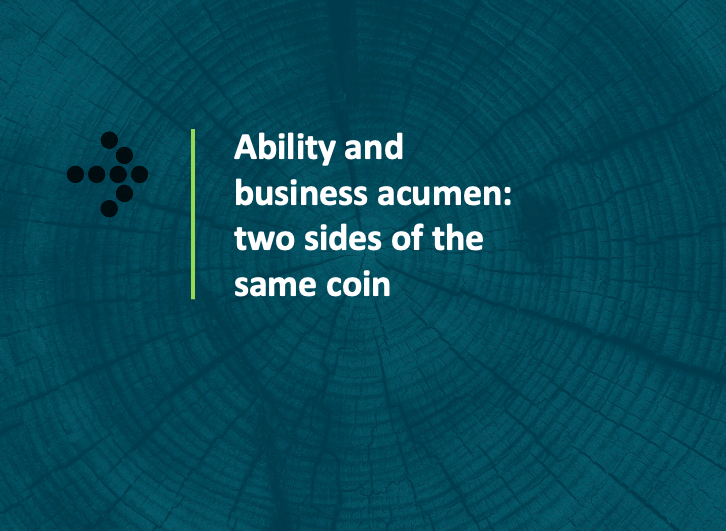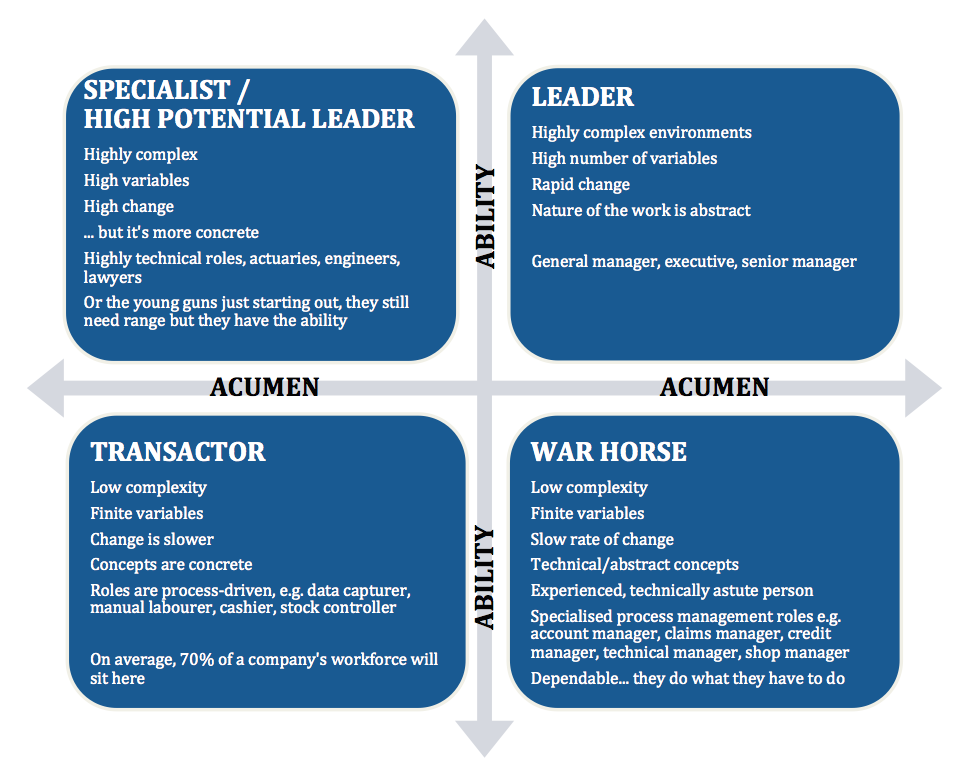Ability and business acumen: two sides of the same coin

So often we come across people who are really good at their jobs, but flounder when they are promoted or given more responsibility. On the other end of the scale is the employee who has an incredible amount of potential or technical skill, but lacks the breadth of knowledge or general leadership skills required for a management position.
What do we do with these individuals in our organisation?
“Many companies tend to focus their assessment methodologies purely on ability,” says Evalex’s Hendrik Bronkhorst. “So you might get, say, a qualified actuary or a recent business school graduate who registers off the charts on the Evalex Business Comprehension Test (BCT), but who fails when you give her additional responsibilities.
“And then there’s the guy who’s been in the company for 20 years, working in the same department, constantly delivering on his objectives, but who totally floundered when a few more items were added to his to-do list.”
Hendrik says the missing ingredient in each of these scenarios is a test for business acumen, which Evalex offers in the form of its Organisation Insight Scale (OIS).
“Where BCT measures abstract, deductive and numeric reasoning, along with maturity, judgement, OIS determines the degree of organisational maturity achieved during an individual’s working life,” explains Hendrik. “There is room in any organisation for individuals who register high or low on ability versus acumen. The trick is being able to identify who falls into which quadrant and matching them with the type of work that bests suits them.”
Evalex put together the following graphic to demonstrate the relationship between ability and business acumen. It uses complexity as a determinant, which can be broken down into three components – number of variables, level of abstraction and frequency of change.

“Take a waitress in a restaurant as an example,” says Hendrik. “The number of variables she has to deal with is easily quantifiable. There’s food, drinks, payment system, guests and cutlery. How often do these things change? The menu might change every now and then, but otherwise it’s pretty constant. And the variables are concrete, rather than abstract. She would be a TRANSACTOR.
“Now consider the president of the United States. The number of variables he has to deal with is infinite, and they change daily – if not hourly. He is also not dealing with actual things but rather with abstract concepts like healthcare and (quite probably) managing his Twitter feed. The role of President of the United States calls for an individual in the LEADER quadrant.”
Evalex’s Business Comprehension Test and Organisation Insight Scale allow you to plot business acumen versus ability on your staff and on the roles within your business. The results provide a best-fit model that is highly accurate and relevant across industries.
“The results also allow us to make recommendations on what steps to take when individuals are not working in the quadrant that best suits their profiles,” concludes Hendrik.